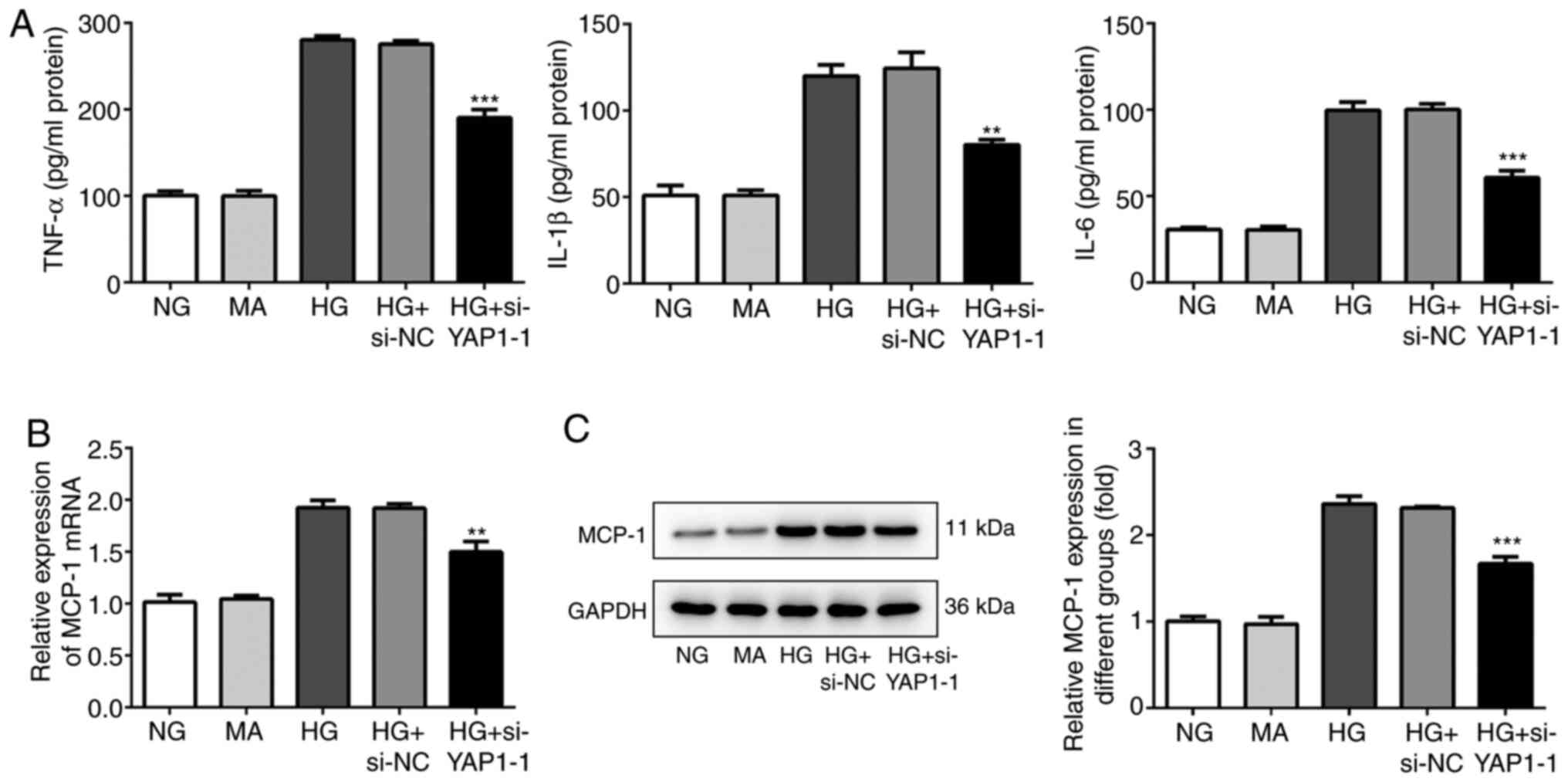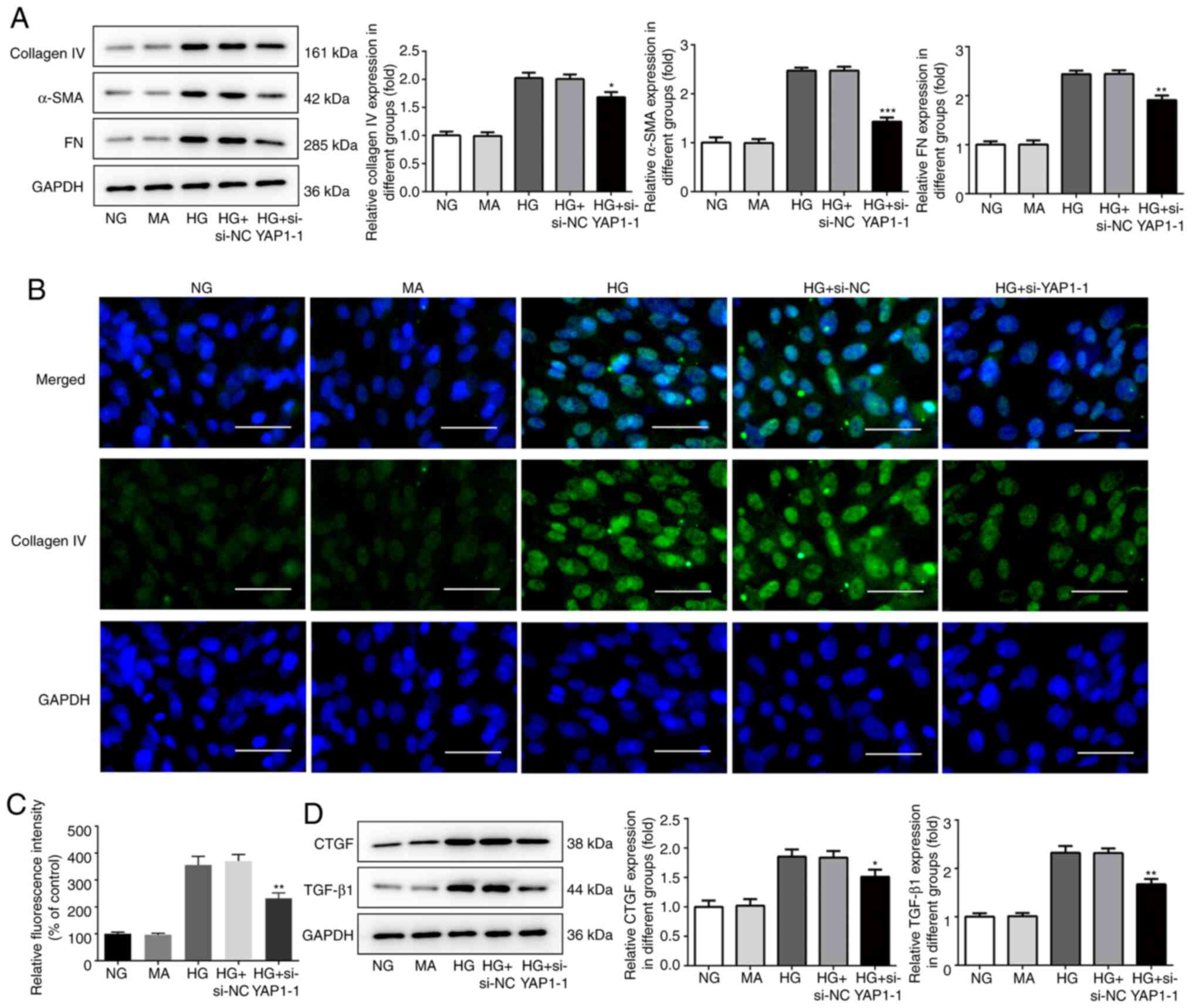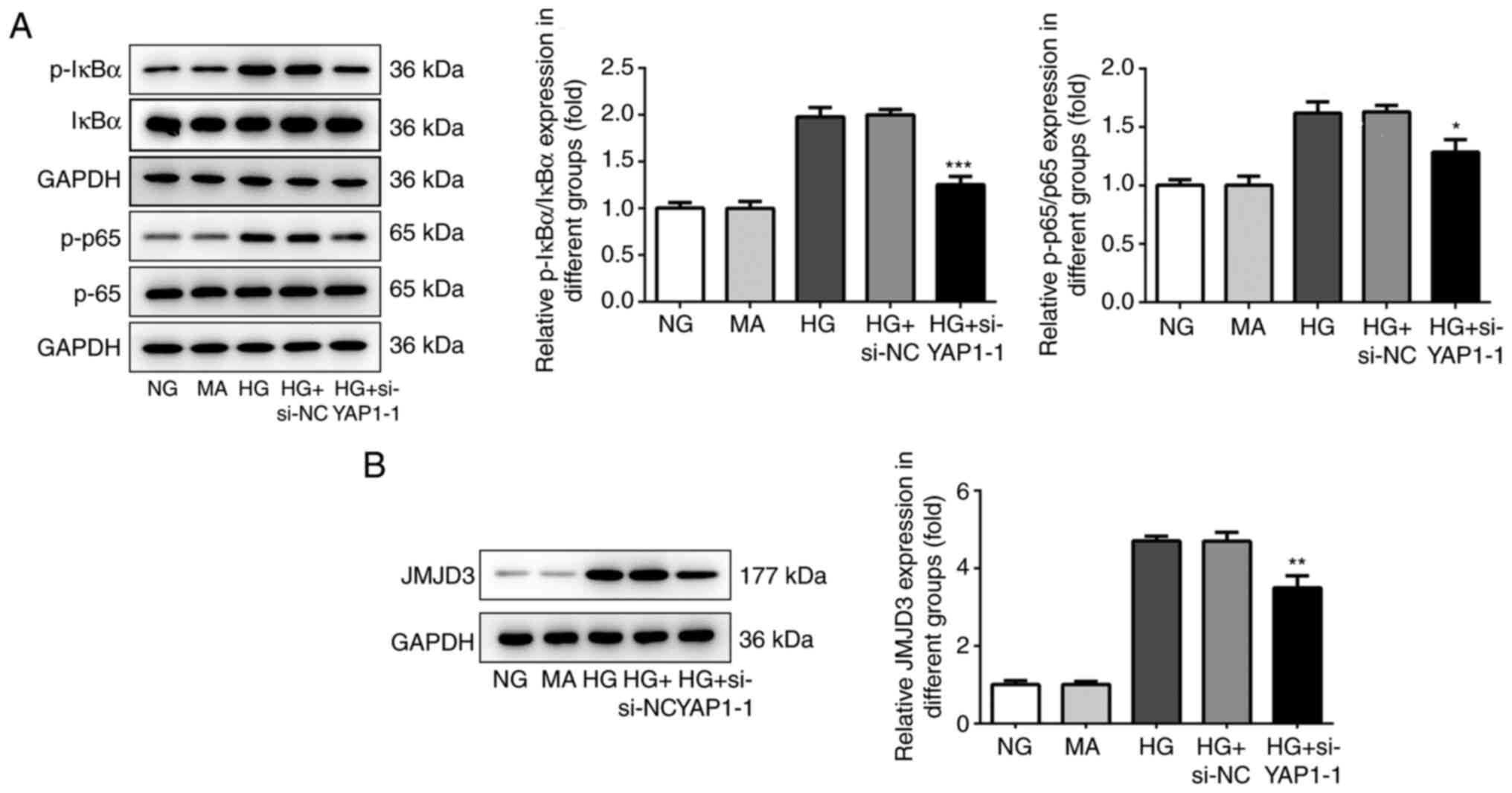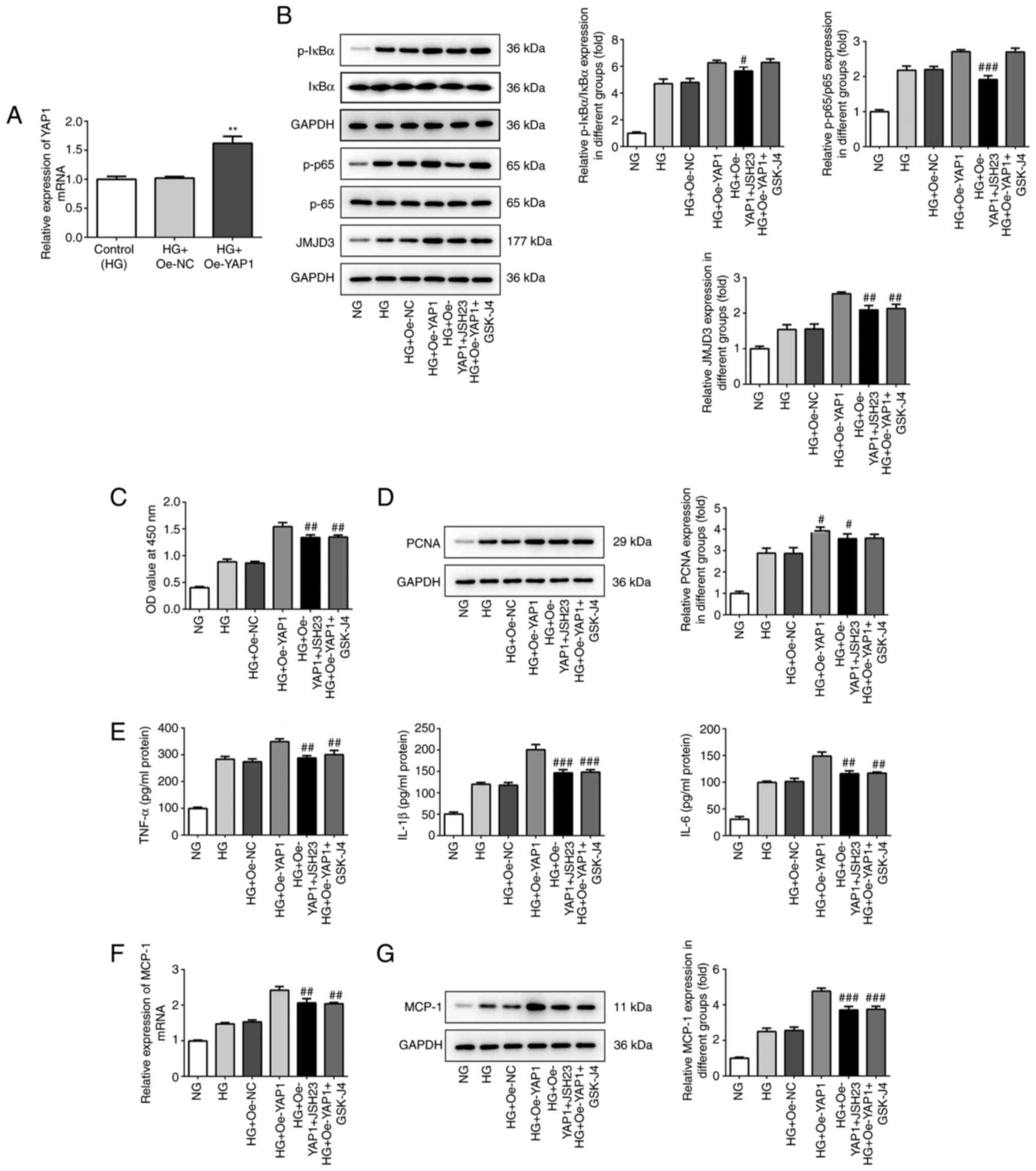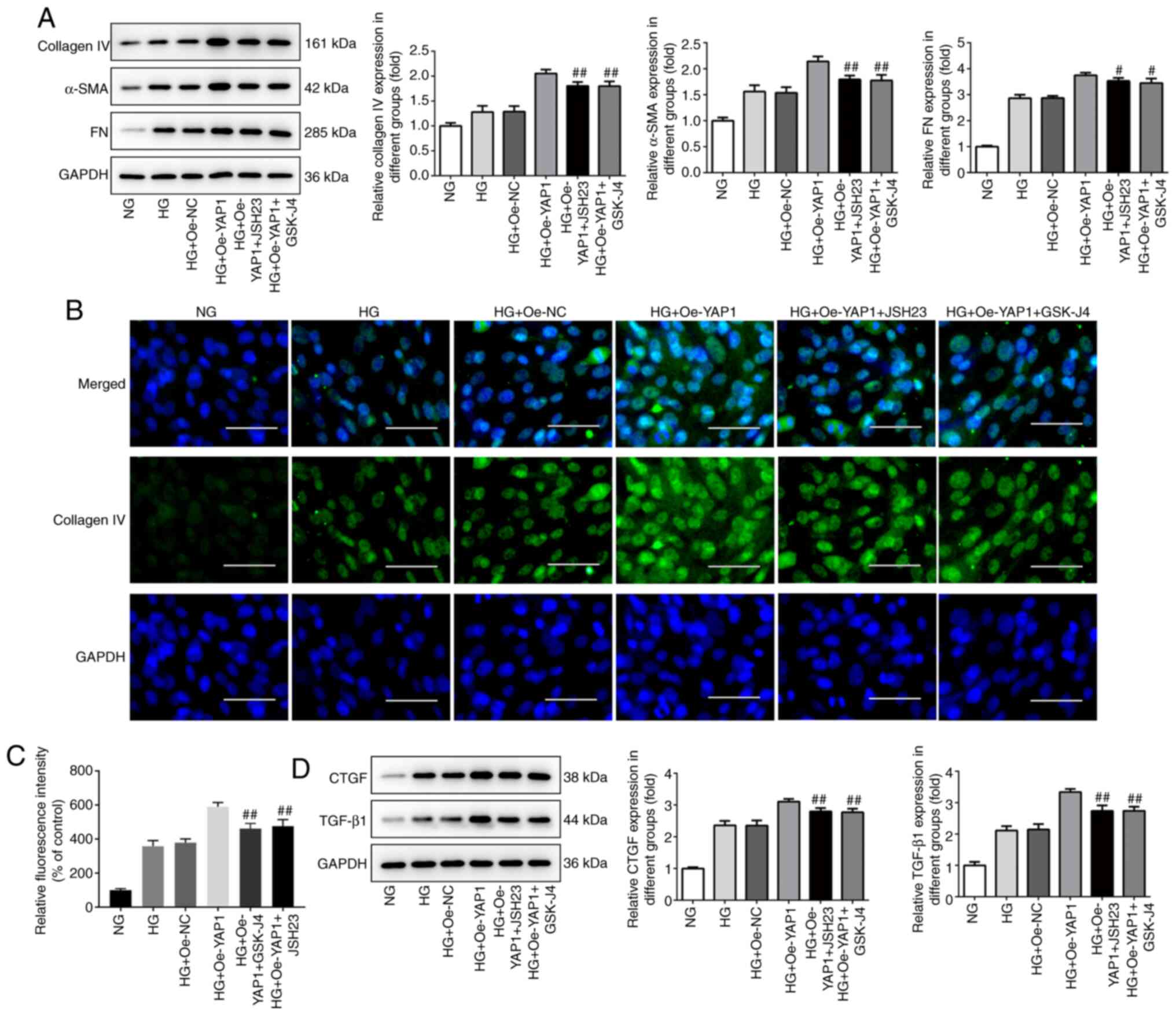|
1
|
Yuan CM, Nee R, Ceckowski KA, Knight KR
and Abbott KC: Diabetic nephropathy as the cause of end-stage
kidney disease reported on the medical evidence form CMS2728 at a
single center. Clin Kidney J. 10:257–262. 2017.PubMed/NCBI View Article : Google Scholar
|
|
2
|
Duran-Salgado MB and Rubio-Guerra AF:
Diabetic nephropathy and inflammation. World J Diabetes. 5:393–398.
2014.PubMed/NCBI View Article : Google Scholar
|
|
3
|
Tessari P: Nitric oxide in the normal
kidney and in patients with diabetic nephropathy. J Nephrol.
28:257–268. 2015.PubMed/NCBI View Article : Google Scholar
|
|
4
|
Wada J and Makino H: Inflammation and the
pathogenesis of diabetic nephropathy. Clin Sci (Lond). 124:139–152.
2013.PubMed/NCBI View Article : Google Scholar
|
|
5
|
Meza Letelier CE, San Martín Ojeda CA,
Ruiz Provoste JJ and Frugone Zaror CJ: Pathophysiology of diabetic
nephropathy: A literature review. Medwave. 17(e6839)2017.PubMed/NCBI View Article : Google Scholar : (In Spanish).
|
|
6
|
Xu X, Xiao L, Xiao P, Yang S, Chen G, Liu
F, Kanwar YS and Sun L: A glimpse of matrix metalloproteinases in
diabetic nephropathy. Curr Med Chem. 21:3244–3260. 2014.PubMed/NCBI View Article : Google Scholar
|
|
7
|
Kwiatkowska E, Domanski L, Bober J,
Safranow K, Romanowski M, Pawlik A, Kwiatkowski S and Ciechanowski
K: Urinary metalloproteinases-9 and-2 and their inhibitors TIMP-1
and TIMP-2 are markers of early and long-term graft function after
renal transplantation. Kidney Blood Press Res. 41:288–297.
2016.PubMed/NCBI View Article : Google Scholar
|
|
8
|
Mazanowska O, Żabińska M,
Kościelska-Kasprzak K, Kamińska D, Krajewska M, Banasik M,
Madziarska K, Zmonarski SC, Chudoba P, Biecek P, et al: Increased
plasma matrix metalloproteinase-2 (MMP-2), tissue inhibitor of
proteinase-1 (TIMP-1), TIMP-2, and urine MMP-2 concentrations
correlate with proteinuria in renal transplant recipients.
Transplant Proc. 46:2636–2639. 2014.PubMed/NCBI View Article : Google Scholar
|
|
9
|
Hu K, Mars WM and Liu Y: Novel actions of
tissue-type plasminogen activator in chronic kidney disease. Front
Biosci. 13:5174–5186. 2008.PubMed/NCBI View
Article : Google Scholar
|
|
10
|
Li FJ, Surolia R, Li H, Wang Z, Liu G, Liu
RM, Mirov SB, Athar M, Thannickal VJ and Antony VB: Low-dose
cadmium exposure induces peribronchiolar fibrosis through
site-specific phosphorylation of vimentin. Am J Physiol Lung Cell
Mol Physiol. 313:L80–L91. 2017.PubMed/NCBI View Article : Google Scholar
|
|
11
|
Grampa V, Delous M, Zaidan M, Odye G,
Thomas S, Elkhartoufi N, Filhol E, Niel O, Silbermann F, Lebreton
C, et al: Novel NEK8 mutations cause severe syndromic renal cystic
dysplasia through YAP dysregulation. PLoS Genet.
12(e1005894)2016.PubMed/NCBI View Article : Google Scholar
|
|
12
|
Rinschen MM, Grahammer F, Hoppe AK, Kohli
P, Hagmann H, Kretz O, Bertsch S, Höhne M, Göbel H, Bartram MP, et
al: YAP-mediated mechanotransduction determines the podocyte's
response to damage. Sci Signal. 10(eaaf8165)2017.PubMed/NCBI View Article : Google Scholar
|
|
13
|
Chen Y, Zhao X, Sun J, Su W, Zhang L, Li
Y, Liu Y, Zhang L, Lu Y, Shan H and Liang H: YAP1/Twist promotes
fibroblast activation and lung fibrosis that conferred by miR-15a
loss in IPF. Cell Death Differ. 26:1832–1844. 2019.PubMed/NCBI View Article : Google Scholar
|
|
14
|
Wu Y, Shen L, Liang X, Li S, Ma L, Zheng
L, Li T, Yu H, Chan H, Chen C, et al: Helicobacter pylori-induced
YAP1 nuclear translocation promotes gastric carcinogenesis by
enhancing IL-1β expression. Cancer Med. 8:3965–3980.
2019.PubMed/NCBI View Article : Google Scholar
|
|
15
|
Wang GL, Xia XL, Li XL, He FH and Li JL:
Identification and expression analysis of the MSP130-related-2 gene
from Hyriopsis cumingii. Genet Mol Res. 14:4903–4913.
2015.PubMed/NCBI View Article : Google Scholar
|
|
16
|
Mulder S, Hamidi H, Kretzler M and Ju W:
An integrative systems biology approach for precision medicine in
diabetic kidney disease. Diabetes Obes Metab. 20 (Suppl 3):S6–S13.
2018.PubMed/NCBI View Article : Google Scholar
|
|
17
|
Choi SY, Bae H, Jeong SH, Park I, Cho H,
Hong SP, Lee DH, Lee CK, Park JS, Suh SH, et al: YAP/TAZ direct
commitment and maturation of lymph node fibroblastic reticular
cells. Nat Commun. 11(519)2020.PubMed/NCBI View Article : Google Scholar
|
|
18
|
Ma R, Ren JM, Li P, Zhou YJ, Zhou MK, Hu Z
and Xiao XY: Activated YAP causes renal damage of type 2 diabetic
nephropathy. Eur Rev Med Pharmacol Sci. 23:755–763. 2019.PubMed/NCBI View Article : Google Scholar
|
|
19
|
Han N, Tian W, Yu N and Yu L: YAP1 is
required for the angiogenesis in retinal microvascular endothelial
cells via the inhibition of MALAT1-mediated miR-200b-3p in high
glucose-induced diabetic retinopathy. J Cell Physiol.
235:1309–1320. 2020.PubMed/NCBI View Article : Google Scholar
|
|
20
|
Park MJ, Kim DI, Lim SK, Choi JH, Han HJ,
Yoon KC and Park SH: High glucose-induced O-GlcNAcylated
carbohydrate response element-binding protein (ChREBP) mediates
mesangial cell lipogenesis and fibrosis: The possible role in the
development of diabetic nephropathy. J Biol Chem. 289:13519–13530.
2014.PubMed/NCBI View Article : Google Scholar
|
|
21
|
Wang J, Yang Q, Nie Y, Guo H, Zhang F,
Zhou X and Yin X: Tetrahydrobiopterin contributes to the
proliferation of mesangial cells and accumulation of extracellular
matrix in early-stage diabetic nephropathy. J Pharm Pharmacol.
69:182–190. 2017.PubMed/NCBI View Article : Google Scholar
|
|
22
|
Sakaki H, Okada M, Kuramoto K, Takeda H,
Watarai H, Suzuki S, Seino S, Seino M, Ohta T, Nagase S, et al:
GSKJ4, a selective jumonji H3K27 demethylase inhibitor, effectively
targets ovarian cancer stem cells. Anticancer Res. 35:6607–6614.
2015.PubMed/NCBI
|
|
23
|
Tokunaga R, Sakamoto Y, Nakagawa S, Miyake
K, Izumi D, Kosumi K, Taki K, Higashi T, Imamura Y, Ishimoto T, et
al: The prognostic significance of histone lysine demethylase
JMJD3/KDM6B in colorectal cancer. Ann Surg Oncol. 23:678–685.
2016.PubMed/NCBI View Article : Google Scholar
|
|
24
|
Chen Y, Liu Z, Pan T, Chen E, Mao E, Chen
Y, Tan R, Wang X, Tian R, Liu J and Qu H: JMJD3 is involved in
neutrophil membrane proteinase 3 overexpression during the
hyperinflammatory response in early sepsis. Int Immunopharmacol.
59:40–46. 2018.PubMed/NCBI View Article : Google Scholar
|
|
25
|
Jia W, Wu W, Yang D, Xiao C, Su Z, Huang
Z, Li Z, Qin M, Huang M, Liu S, et al: Histone demethylase JMJD3
regulates fibroblast-like synoviocyte-mediated proliferation and
joint destruction in rheumatoid arthritis. FASEB J. 32:4031–4042.
2018.PubMed/NCBI View Article : Google Scholar
|
|
26
|
Yu S, Chen X, Xiu M, He F, Xing J, Min D
and Guo F: The regulation of Jmjd3 upon the expression of NF-κB
downstream inflammatory genes in LPS activated vascular endothelial
cells. Biochem Biophys Res Commun. 485:62–68. 2017.PubMed/NCBI View Article : Google Scholar
|
|
27
|
Lai J, Ge M, Shen S, Yang L, Jin T, Cao D,
Xu H, Zheng X, Qiu S, Wang K, et al: Activation of NFKB-JMJD3
signaling promotes bladder fibrosis via boosting bladder smooth
muscle cell proliferation and collagen accumulation. Biochim
Biophys Acta Mol Basis Dis. 1865:2403–2410. 2019.PubMed/NCBI View Article : Google Scholar
|
|
28
|
Ye S, Lawlor MA, Rivera-Reyes A, Egolf S,
Chor S, Pak K, Ciotti GE, Lee AC, Marino GE, Shah J, et al:
YAP1-mediated suppression of USP31 enhances NFκB activity to
promote sarcomagenesis. Cancer Res. 78:2705–2720. 2018.PubMed/NCBI View Article : Google Scholar
|

















